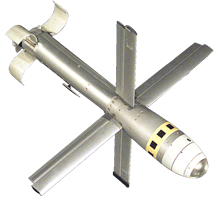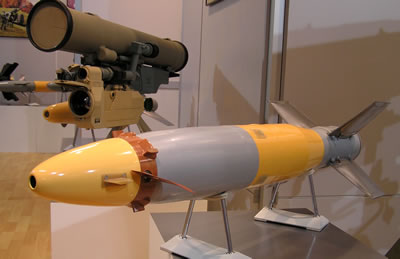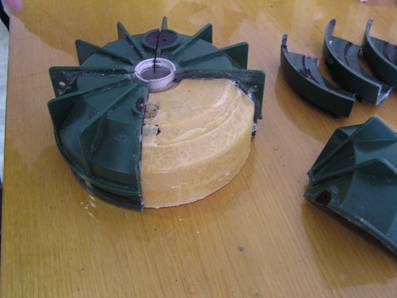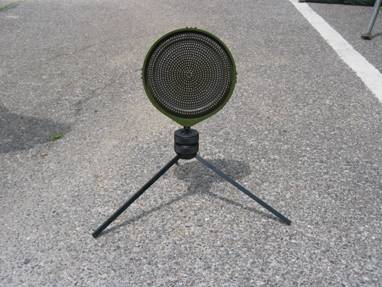|
Abstract Use of explosives have been an important technology for centuries and continue to be improved. This article provides a short review of the historical background of the different explosive material, introduces the novel military equipment consisted special explosives and shortly describes their usage areas. Background Black powder was the first explosive composition. It was introduced in Europe in the 13th century when Roger Bacon in 1249 produced black powder. By the end of the century many countries were using black powder as a military aid to breach the walls of castles and cities. Corned black powder came into use for small guns during the 15th century and for big guns in the 16th century. In 1627 black powder was used as a blasting aid for recovering ore in Hungary by Gáspár Weindl. By the middle of the 19th century the limitations of black powder as a blasting explosive were becoming apparent. Difficult mining activities required a better and stronger explosive. In 1846 the Italian Ascanio Sobrero discovered liquid nitroglycerine [C3H5O3(NO2)3]. A few years later Immanuel Nobel developed a process for manufacturing nitroglycerine, and in 1863 he erected a small manufacturing plant. His son, Alfred in 1864 invented the metal "blasting cap" detonator which greatly improved the initiation of black powder. At the same time as nitroglycerine was being prepared, the nitration of cellulose to produce nitrocellulose (also known as guncotton) was also being undertaken. In 1875 Nobel discovered that on mixing nitrocellulose with nitroglycerine a gel was formed. This gel was developed to produce blasting gelatine, gelatine dynamite and later in 1888, ballistite, the first smokeless powder. Picric acid or trinitrophenol [C6H3N3O7] was found to be a suitable replacement for black powder in 1885 by Turpin, and in 1888 black powder was replaced by picric acid in British munitions under the name Liddite. Picric acid did have its problems: in the presence of water it caused corrosion of the shells, its salts were quite sensitive and prone to accidental initiation, and picric acid required prolonged heating at high temperatures in order for it to melt. An explosive called "Tetryl" was also being developed at the same time. Tetryl was first prepared in 1877 by Mertens. It was used as an explosive in 1906, and in the early part of this century it was frequently used as the base charge of blasting caps. Around 1902 the Germans and British had experimented with trinitrotoluene (TNT) [C7H5N3O6], first prepared by Wilbrand in 1863. The manufacture of TNT began in Germany in 1891 and in 1899 aluminium was mixed with TNT to produce an explosive composition. In 1902 TNT was adopted for use by the German Army replacing picric acid, and in 1912 the US Army also started to use TNT. By 1914, TNT became the standard explosive for all armies. Production of TNT was limited by the availability of toluene and it failed to meet demand for the filling of munitions. Use of a mixture of TNT and ammonium nitrate, called "Amatol" became wide spread. It was adopted for loading high explosive shells and later the most World War II mines had had 50/50 ammonium nitrate and TNT (amatol) warheads. This was a low quality explosive but was later improved by the addition of about 20% aluminum to produce "Minol". After World War I, researches were focused to find even new and more powerful explosives. From these programmes came cyclotrimethylene-trinitramine (RDX) [C3H6N6O6] also called Hexogen, and pentaerythritol-tetranitrate (PETN) [C5H8N4O12]. PETN was first prepared in 1894, RDX in 1899 by the German Henning for medicinal use. During World War II, RDX was utilized more than PETN, because PETN was more sensitive to impact and its chemical stability was poor. Explosive compositions containing 50% PETN and 50% TNT were developed and called "Pentolite". This composition was used for filling hand and anti-tank grenades, and detonators. In 1940 Meissner developed a continuous method for the manufacture of RDX. At the same time, Bachmann developed a manufacturing process for RDX from hexamine which gave the greatest yield. Bachmann's products were known as Type B RDX and contained a constant impurity level of 8-12%. The explosive properties of this impurity were later utilized and the explosive cyclotetramethylene-tetranitramine (HMX) [C4H8N8O8] also known as Octogen, was developed. Mouldable plastic explosives were also developed during World War II; these often contained vaseline or gelatinized liquid nitro compounds to give a plastic-like consistency. Polymer bonded explosives (PBXs) were also developed to reduce the sensitivity of the newly-synthesized explosive crystals by embedding the crystals in a rubber-like polymeric matrix. The first PBX composition was developed in USA in 1952. The composition consisted of RDX crystals embedded in plasticized polystyrene. More recent developments in explosives have seen the production of hexanitrostilbene (HNS) [C14H6N6O12] in 1966 by Shipp, and triaminotrinitrobenzene (TATB) [(NH2)3C6(NO2)3] in 1978 by Adkins and Norris. Both of these materials are able to withstand relatively high temperatures compared with other explosives. The "top of the military explosives" called Octanitrocubane (ONC) [C8N8O16] was developed in the near past by Eaton. It has 30 percent greater performance than the most powerful common military explosive, HMX. Because it has no Hydrogen, it produces no water vapor. When used as a propellant in rockets, it would mean that it would leave vapor trail and it would be harder to detect and track. Military use of explosives today The perfect military explosive has to fulfill special requirements. It has to be chemically stable, powerful, easy to handle and hard to detonate except under specified conditions. It has also to be loaded into shells, bombs and has to be meltable and insensitive enough. New, modern weapons and explosive contained equipment consist of these kinds of explosives. A typical fuel air explosive (FAE) device consists of a container of fuel and two separate explosive charges. After the munition is dropped or fired, the first explosive charge bursts open the container at a predetermined height and disperses the fuel in a cloud that mixes with atmospheric oxygen. The second charge then detonates the cloud, creating a massive blast wave, which destroys unreinforced buildings and equipment and kills or injures personnel. FAEs are more powerful than conventional high-explosive munitions of comparable size. A weapon development company is producing a minefield breaching system called "Carpet". The system is a unique implementation of fuel-air explosive technology. For minefield breaching up to 20 rockets are fired in a rapid sequence. At the impact point, each rocket disperses a spray of fuel above the target area, to form the fuel-air explosive cloud. The detonation creates a strong impulse over a wide area, which triggers most mines or man-made obstacles.
Figure No. 1 "Carpet" system Termed "thermobaric," also a relatively new explosive belongs to a class of fuel-rich compositions that release energy over a longer period of time than standard explosives, thereby creating a long-duration pressure pulse when detonated in confined spaces. Thermobaric explosives (TBXs) are mixtures of conventional explosives and specific additives, such as aluminum, that undergo combustion after the detonation reaction. The burning plasma clouds can penetrate even the smallest cracks, and when the slurry is completely consumed, the resulting vacuum causes a massive back-blast that crushes everything in the area. Hellfire thermobaric warhead using a metal augmented explosive charge is used primarily in urban warfare, against bunkers, buildings caves and other concealed targets. This warhead is designed to inflict greater damage compared to the Hellfire's standard or blast-fragmentation warheads. The new warhead contains a fluorinated aluminum powder that is layered between the warhead casing and the PBXN-112 explosive fill. When the explosive detonates, the aluminum mixture is dispersed and rapidly burns. The resultant sustained high pressure is extremely effective against enemy personnel and structures.
Figure No. 2 Hellfire family Viper Strike Laser Guided Weapon is intended for operations that require a flexible angle of inclination, particularly in mountainous terrain or built-up areas. Its small size and precision provide for low collateral damage in cluttered urban environments. Its warhead is smaller than the Hellfire's, containing only 2 kgs of Anti-Tank High Explosive (HEAT) charge, for reduced collateral damage in an urban built-up area. The final version of Viper Strike could be equipped with fragmentation belt as well as an optional blast fragmentation and thermobaric warhead.
Figure No. 3 Viper Strike The Russian-made Kornet E Laser Guided AT Missile is a semi-automatic laser beam riding missile is effective at ranges of 100-5,500 m. The missile utilizes a tandem shaped charge anti-tank warhead or a thermobaric (fuel-air explosive) charge, for anti-personnel and anti-material blast and incendiary effect.
Figure No. 4 Kornet E Missile Modern landmines and charges also have special explosive filling. The Hungarian-made HAK-1M anti-tank charge and IHR-60 anti-personnel charge have cased Composit B explosive. Figure No. 5 Explosive filling of HAK-1M Composition B is a mixture of 59% RDX, 40% TNT, and 1% wax, and desensitizing agents are added, too. This explosive is used by the military in land mines, rockets and projectiles. It has a detonation velocity of about 7800 m/s and is also used as a primer and booster for blasting agents. The TNT reduces the sensitivity of the RDX to a safe degree and, because of its melting point, allows the material to be cast-loaded. The blast energy of Composition B is slightly higher than that of TNT. Nonhygroscopic, remains stable in stowage and it has an extremely high-shaped-charge efficiency, which is excellent for landmines. Composition B has been used as a more powerful replacement for TNT in loading some of the rifle grenades and some rocket heads. It can be used where an explosive with more power and brisance is of tactical advantage and there is no objection to a slight increase of sensitivity.
Figure No. 6 IHR-60 with its fragments Conclusion In considering the military use of explosives, the first and most important requirement is to use the most effective explosive available for the situation. Explosives in use for military purposes have to fulfill special and strict requirements. The high explosives for these purposes are compositions or mixtures of ingredients developed in the earliest centuries, and they are capable of releasing large amount of energy. But this energy always has to be supervised, used in appropriate manner and should never loose control. Bibliography Mű/213. Robbantási Utasítás, A HM kiadványa, Budapest, 1973. Köhler, Joseph - Meyer, Rudolf: Explosives, Fourth, revised and extended edition, VCH, Germany, 1993. Lukács László: A Magyar Honvédségnél alkalmazott robbantási eljárások és robbanóanyagok legfontosabb részterületei fejlődésének vizsgálata és a továbbfejlesztés javasolt irányai, Kandidátusi értekezés, ZMKA, Budapest, 1995. |
© ZMNE BJKMK 2006.






